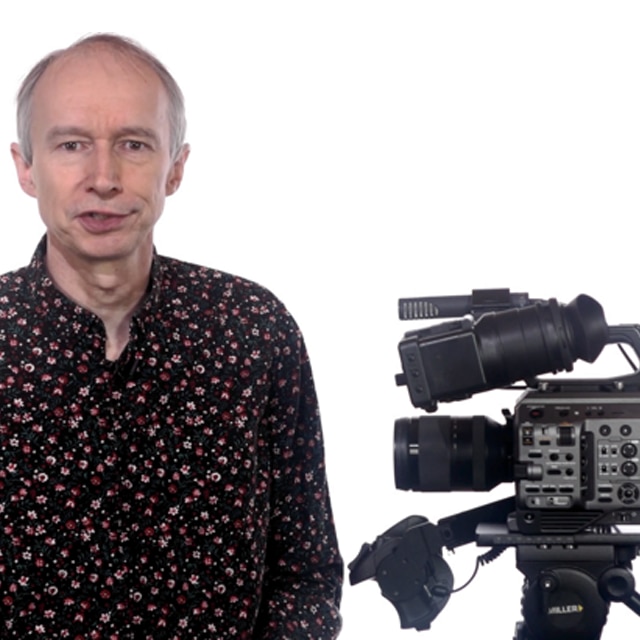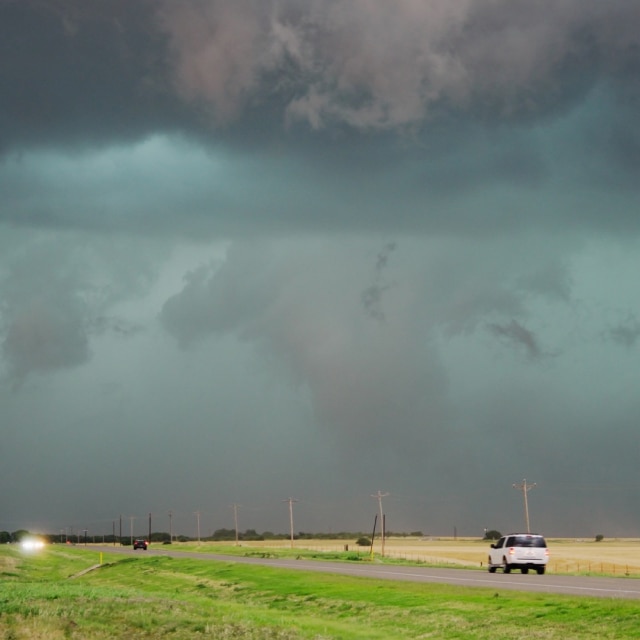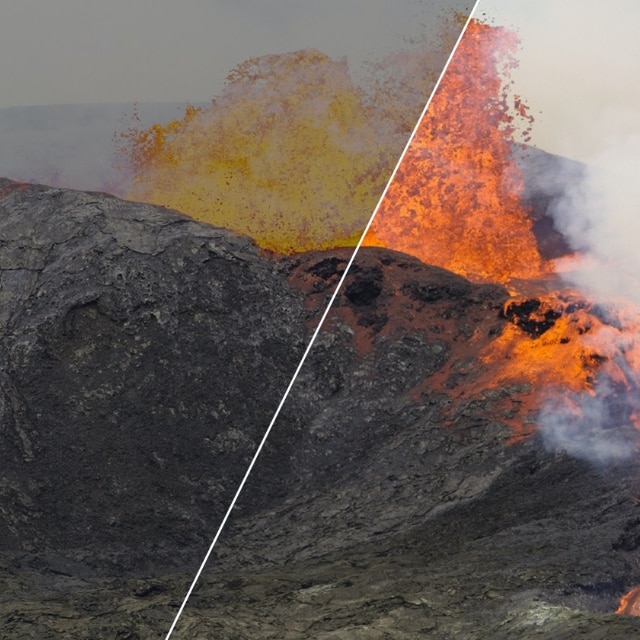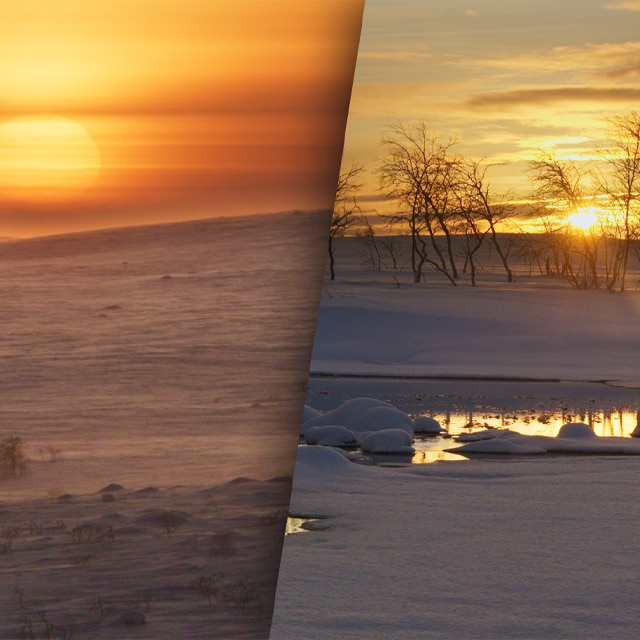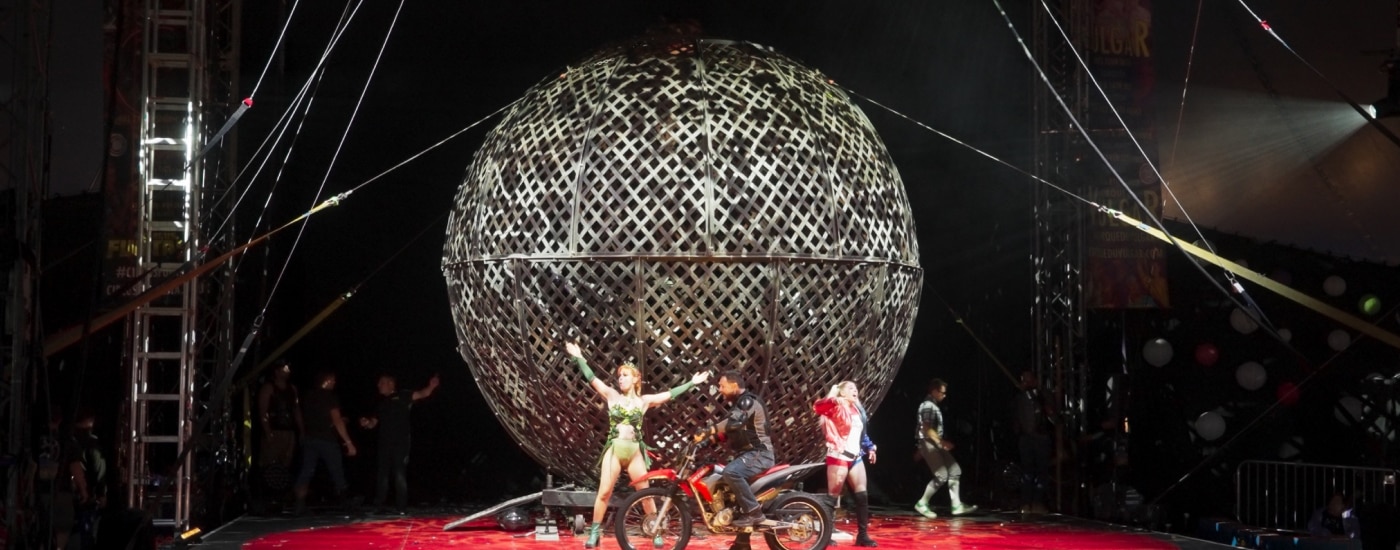
Filming in Glastonbury’s Big Top
Once a year, one of the world’s largest festivals takes place near Pilton village in Somerset, England. Tickets sell out within minutes with over 200,000 people attending and expansive BBC live music coverage.
Glastonbury is more than just music, however, it also includes poetry, theater, comedy and circus. There are typically over a thousand Theater and Circus acts every year.
The Big Top Acts
Most of the circus acts appear in a traditional big top tent and each day there are over 40 acts from all over the world. They are acts of skill, often combined with a story, dance and comedy.

Unique challenges
Our Glastonbury shoot has three of us in the camera crew, led by Producer Steve Connor, and we live in small tents for five days. Camped right behind the big top tent, we don’t have far to go each day, but getting a good night’s sleep is a serious challenge as the acts continue until the early morning.


Camera Choices
The cameras chosen for the shoot were the FX9, FX6 and FX3. In the big top, the main camera would be the FX9. The FX6 would be used when filming around other parts of the Theater and Circus fields, and the FX3 was taken as a spare. Everything was shot using S-Log3 and SGamut3.Cine recording XAVC-I to the internal media. The project would be delivered at 23.98fps but various frame rates were used while shooting for slow motion as well as time-lapse.
FX9 Setup
The FX9 was setup with an Atomos Ninja to help with monitoring while shooting. It was mostly positioned at the front of the stage. The lens used was the Sony 28-135mm f4 power zoom. There were several reasons for choosing the FX9 for this application. The first was the FX9’s different scan modes to get tighter shots with the same lens. Next was the camera’s dual base ISO levels of 800 and 4000 – ideal for the light levels in the tent and the frame rates we wanted to use.
When switching up from our base frame rate of 23.98fps to 60fps to shoot slow motion, by switching the base ISO from 800 to 4000 you can stay at almost exactly the same aperture despite the change in shutter speed. Additionally, the FX9’s extra assignable buttons allow me to change functions such as the autofocus modes or scan modes very quickly.
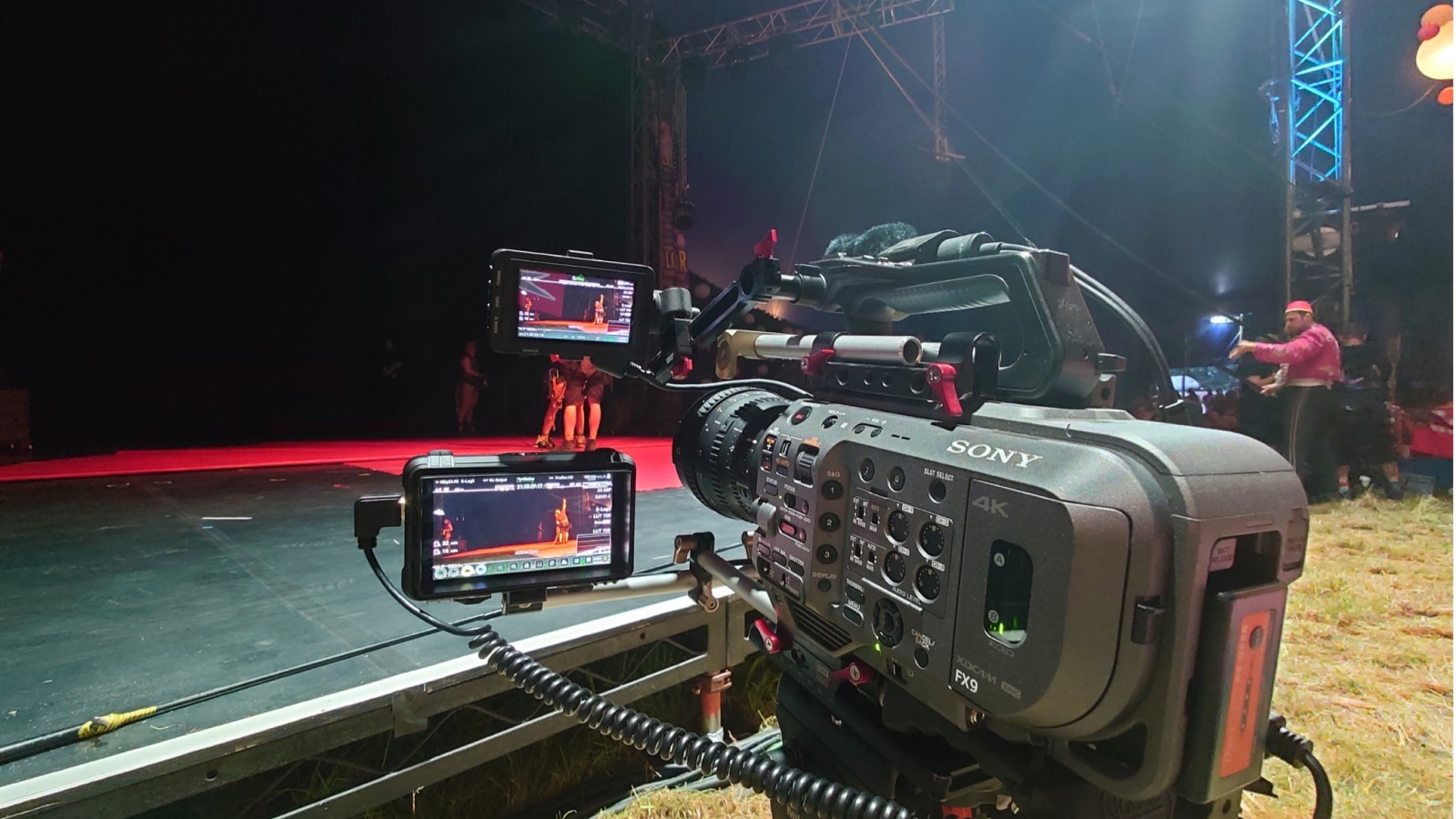
Aerial Acts
This year there were a lot of aerial acts and filming from ground level gives a view similar to that of the audience. But I felt it would be good to get some shots from higher up. After talking to the circus riggers, they offered to put me into a harness so I could climb up into the rigging under their guidance. As heights have never really bothered me, I decided to give it a go.
For my first climb, I took the FX6: it’s small, light and the batteries last well. I used the Sony 24-105mm f4 lens; again, size and weight were an important consideration, and this lens gives you a great range of focal lengths in a compact package. For my next climb, I took the FX3, again with the 24-105mm.

Seriously Hot!
Inevitably, heat rises in the Big Top and on warm summer days, 89.6F at ground level could mean 104F or even 122F in the rigging. Even though I would only be up there for 90 minutes at a time, I had to take plenty of water. It really was quite unpleasant hanging in a climbing harness with sweat pouring off me. But, as they say, no pain, no gain.

Autofocus to the rescue
The shots I was able to get were well worth it. Looking down at a rope act gives you a completely different perspective. While I did have both hands free thanks to the harness I was using, the climbing ropes tended to make it difficult to hold the camera in my right hand and focus with my left, or to hold the camera in a position where I could see the LCD screen clearly enough for critical focus. So, I relied entirely on the FX6’s autofocus for these shots.
After a bit of experimentation, I settled on face priority with the Subject Shift Sensitivity set to 2 to prevent the focus from constantly jumping to the many different objects that moved through the shots. I set the AF transition speed to a fast 6, to allow the AF distance to change quickly as the performers moved quickly towards and away from me. I then used the touch tracking to touch on the performer and allowed the AF to do its thing. Looking through the high shots now, most of which were shot at 120fps, the vast majority is perfectly in focus. I really don’t think I could have done any better than the AF.

28-135mm Power Zoom
Back on the ground again, I use autofocus for most FX9 shots. The AF on these cameras is so good that it is hard to do better yourself, especially when it comes to tracking rapidly or randomly moving objects and people. One of the great things about the Sony 28-135mm power zoom is the ability to quickly switch between AF and manual focus simply by moving the lens’s large focus ring forwards for AF and back for manual. The parfocal nature of this lens means that zooming in and out during the shot is smooth and easy. I really do think that for this kind of filming this lens is near perfect. If I wanted a wider shot, I would swap to the Sony 16-35mm f4 power zoom, another really great lens for this type of production.

Download Free Festival LUT
This LUT, which I have called “Festival”, was designed to provide true to life but vibrant colors and a pleasing contrast range. I wanted to faithfully reproduce the wide range of vivid colors seen in the performers’ costumes without going over the top. This LUT should be useful for festivals and events, parties and celebrations. It’s included in my updated LUT collection for Sony.

Final Output
As the week progressed, Steve edited highlight clips for Facebook and other social media platforms to promote these events to a wider audience. The Glastonbury Festival is so big that it’s easy to miss large parts of it. We also provide footage for the BBC to use in their coverage and they always love the quality we get from the Sony cameras.
Hopefully next year we will be invited back to do it all again, to become part of the circus family once more.
